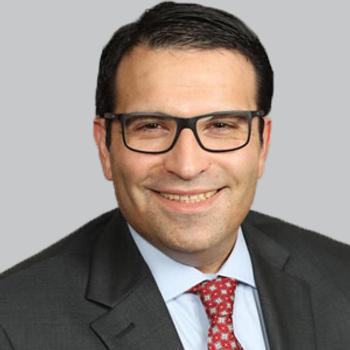
External Trigeminal Nerve Stimulation Proves Safety, Efficacy in Migraine Treatment
Using the FDA-approved Cefaly device, the TEAM study data suggest that the device can be applied as a safe alternative to pharmacological treatments in the acute treatment of migraine.
External trigeminal nerve stimulation (e-TNS), done with the Cefaly device, displayed superiority to a sham device in providing 2-hour pain freedom and freedom from the most bothersome symptom (MBS), as well as sustained pain freedom at 24 hours, in a population of patients with migraine in the TEAM study (NCT03465904).
All told, active stimulation was markedly more effective than sham in achieving 2-hour pain-freedom (active: 27.27%; sham: 17.72%; P = .0167) for a therapeutic gain of 9.55%, while a significantly higher proportion of active stimulation patients also achieved freedom from their MBS (58.85% vs. 42.19%; P = .0006).
The data from the phase 3 randomized, double-blind, sham-controlled trial of e-TNS for the acute treatment of migraine ultimately suggest that the device can be applied as a safe alternative to pharmacological treatments in the acute treatment of migraine. Deena Kuruvilla, MD, medical director, Westport Headache Institute, presented the data at the
“External trigeminal nerve stimulation has been cleared by the FDA for the acute and preventive treatment of migraine. [It] was first studied for prevention in the PREMICE study, and it went on to be studied in a smaller, pilot study—the ACME study—which was conducted for the acute treatment of migraine,” Kuruvilla explained in her presentation. “External trigeminal nerve stimulation directly stimulates the supraorbital nerve in the forehead, a branch of the trigeminal nerve. The trigeminovascular system a key player in migraine pathophysiology.”
READ MORE:
A total of 538 adults meeting the International Classification of Headache Disorders 3rd Edition criteria for 2-8 migraine headache days per month were recruited and randomized in a 1:1 ratio to active or sham stimulation. Of those, 446 participants were included in the analysis. Neurostimulation was applied for a 2-hour, continuous session.
Additional findings showed that sustained pain freedom at 24 hours was higher in the active stimulation group (23.92%) compared to the sham group (15.19%; P = .0223). As well, there were no statistically significant differences between the active and sham groups in the use of rescue medications between 2 and 24 hours.
“Several currently available pharmacological treatments for the acute treatment of migraine often have contraindications, poor tolerability, and a risk for medication overuse headache,” Kuruvilla et al wrote. “The Cefaly device is a noninvasive neuromodulation treatment which stimulates the bilateral supraorbital nerves transcutaneously to provide pain relief by targeting a main factor in migraine pathophysiology, the trigeminal nerve.”
AEs were reported in 7.05% (n = 21) of active stimulation participants and in 2.64% (n = 8) of sham stimulation participants. The most common AEs reported were forehead paresthesia, discomfort, or burning, reported in 3.5% (n = 9) and 0.4% (n = 1) of the active and sham groups, respectively. Notably, no serious adverse events (AEs) were reported in either the active or sham stimulation groups.
For more coverage of AHS 2021,
REFERENCE
Kuruvilla DE, Starling AJ, Tepper SJ, Mann JI, Johnson M. A phase 3 randomized, double-blind, sham-controlled trial of e-TNS for the acute treatment of migraine (TEAM). Presented at 2021 AHS Annual Scientific Meeting; June 3-6. Abstract IOR-02.
Newsletter
Keep your finger on the pulse of neurology—subscribe to NeurologyLive for expert interviews, new data, and breakthrough treatment updates.


































